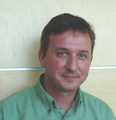British Columbia and Alberta sign Memorandum of Understanding to advance use of the ‘Water Balance Model powered by QUALHYMO’ (Nov 2008)

“The MOU formalizes a relationship that dates back to September 2004 when BC participation in the Okotoks LID Conference was the catalyst for a number of Alberta agencies coming together to form the ALIDP,” stated Doug Marter (City of Calgary), ALIDP Chair. “Under the umbrella of the Inter-Provincial Partnership, we can pool resources with other provinces and add to the capabilities of the Water Balance Model powered by QUALHYMO.”





